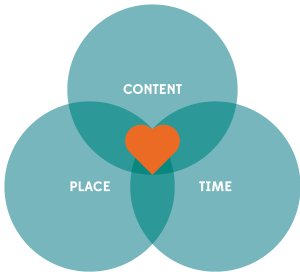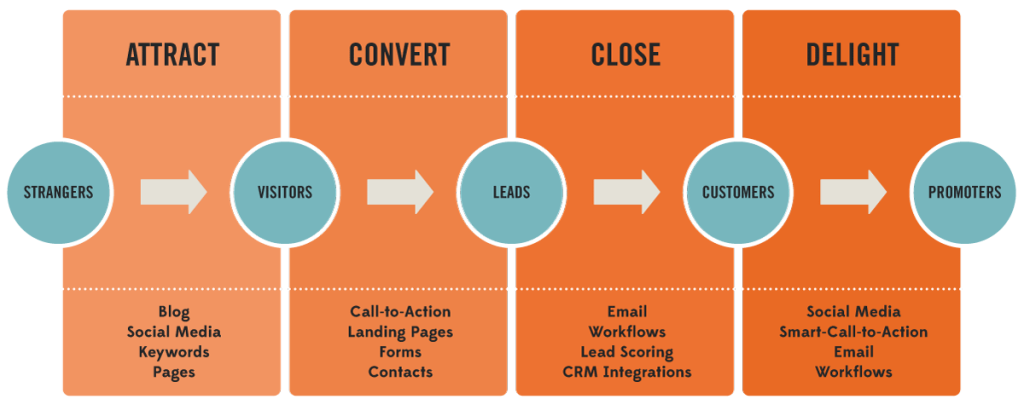How would you like to transform your business and turn your website into a lead generating machine? Sound far-fetched? Well, it isn’t. Utilizing inbound marketing techniques, you can put your website to work for you and move beyond spray and pray digital marketing.
What is Inbound Marketing?
Simply put, inbound marketing refers to marketing practices geared toward creating materials that bring visitors in, rather than marketers having to rely on activities that go out to earn prospects’ attention. Inbound marketers create compelling content that gains customers’ attention, makes the company more easily found online, and draws customers to the business’ website where systems are deployed to help nurture these prospects through the buyer’s lifecycle. Inbound marketing relies heavily on the “sharing is caring” approach to client engagement and leverages healthy relationship building to create trust between you and your potential customers. By creating content specifically designed to appeal to your dream customers, inbound attracts qualified prospects to your business and keeps them coming back for more. Inbound hinges on several main elements to help engage your audience, turn prospects-into-leads-into-customers who, in turn, help promote your business to an even wider reach of potential clients.
Inbound Marketing Components
The Buyer’s Lifecycle
Inbound marketing works to nurture clients throughout the buyer’s lifecycle to convert prospects to leads, then to customers, then on to be promoters of your business. Promoters don’t just materialize out of thin air; they start off as strangers, visitors, contacts, and customers. Inbound marketing brings specific marketing tools and actions to the table to nurture those strangers throughout their journey and transform them into promoters.
Personalization
In the initial phases of inbound marketing, time is spent identifying and devising personas – fictitious personifications of your target audiences. These personas help guide your voice and help you tailor your content to the wants and needs of the people who you want to reach. Your personas can evolve over time as you gather more information about and develop a stronger understanding of your prospects (who they are, where they get their information, what types of materials engage their interests), and then outline the benefits of your services that alleviate their pain points. Persona development is the first step to creating personalized messaging and discovering where to target your inbound marketing deployment.
Content Creation + Distribution
The initial “awareness” phase of the buyers’ journey is dominated by the quest for information. Inbound marketing engages these buyers with targeted content devised to provide answers to prospects’ and customers’ basic questions and needs – particularly in regard to their particular challenges. These materials include – but are not limited to – informative blog posts, forum/group engagement, and social outreach to help engage target audiences where they seek information most. Content is the primary component required to mount a successful inbound marketing campaign.
Multi-channel
Inbound marketing leverages a multi-channel approach to outreach – it goes where your customers “live” online to engage with them where they seek out information. Most people have tried and trusted resources where they seek out information and answers to their business problems. This is where inbound marketing shines. Regular, consistent on-site content deployment builds upon itself by boosting organic SEO. This same material is promoted where your personas gather information to help pull them into your site where the inbound marketing machine goes to work.

Integration
All of these systems work as one to guide your prospects through the sales funnel. Specialized tools help streamline the process to ensure that your efforts are coordinated and processes are in place to convert strangers to prospects, prospects to leads, leads to customers. and, finally, customers to promoters. All you have to do is turn on the engine. By publishing the right content in the right place at the right time, your marketing becomes relevant and helpful to your customers, not interruptive.
Now that’s marketing people can love.

